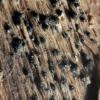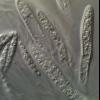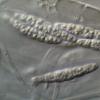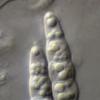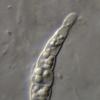
12-11-2021 00:03
Lepista ZacariasHi everybody,A week ago in my fiels trip I noticed

29-12-2025 17:44
Isabelle CharissouBonjour,J'aimerais savoir si d'autres personnes au

29-12-2025 17:12
 Bernard CLESSE
Bernard CLESSE
Bonjour à toutes et tous,Pourriez-vous m'aider à

29-12-2025 17:01
Gernot FriebesHi,I'm looking for help with this hyphomycete with

29-12-2025 08:30
Hello.A tiny ascomycete sprouting under Juniperus

29-12-2025 10:15
Hulda Caroline HolteHello, I found and collected this propoloid ascom

29-12-2025 09:38
Oskari VirtanenHi,could anyone help me identify this, I suspect P
Lophiostoma myriocarpum
Chris Yeates,
06-10-2014 20:36
 Bonsoir tous
Bonsoir tousI recently collected a partially-decorticated twig in woodland near a stream. I originally suspected that it might be a Chaetosphaeria, but under the microscope it was clearly not - fissitunicate asci proved that. Many, but by no means all, of the perithecia were somewhat laterally compressed and I considered Lophiostoma. Holm & Holm 1988 (Symb. Bot. Upsal. XXVIII) led me to Lophiostoma myriocarpum; the description fitted well, although the accompanying drawing (from the type collection) was not very convincing.
ASCOFrance came to the rescue in the form of Alain and Zotto:
http://www.ascofrance.com/search_forum/7390
I am pretty certain that my fungus is indeed Lophiostoma myriocarpum (or at the very least the same as Alain's fungus, although his spores are longer), this based on the narrowly fusoid multiguttulate spores 27.6-30.8 x 4.8-5.5µm. These were mostly 5-septate, though some were seen with up to 7 septa (the latter could be seen germinating from the polar cells - see the last photo).
As far as I can tell this taxon has not been recorded for Great Britain & Ireland, although there are two records for Lophiostoma vigheffulense (Pass.) Chesters & A.E. Bell. Holm & Holm suggest the two are conspecific - though the spore dimensions given in Chesters and Bell (Mycol. Pap. 120) are smaller and their drawing shows consistently 3-septate spores, with the comment that these are not constricted at the septa.
As ever comments and suggestions are more than welcome.
Cordialement
Chris


